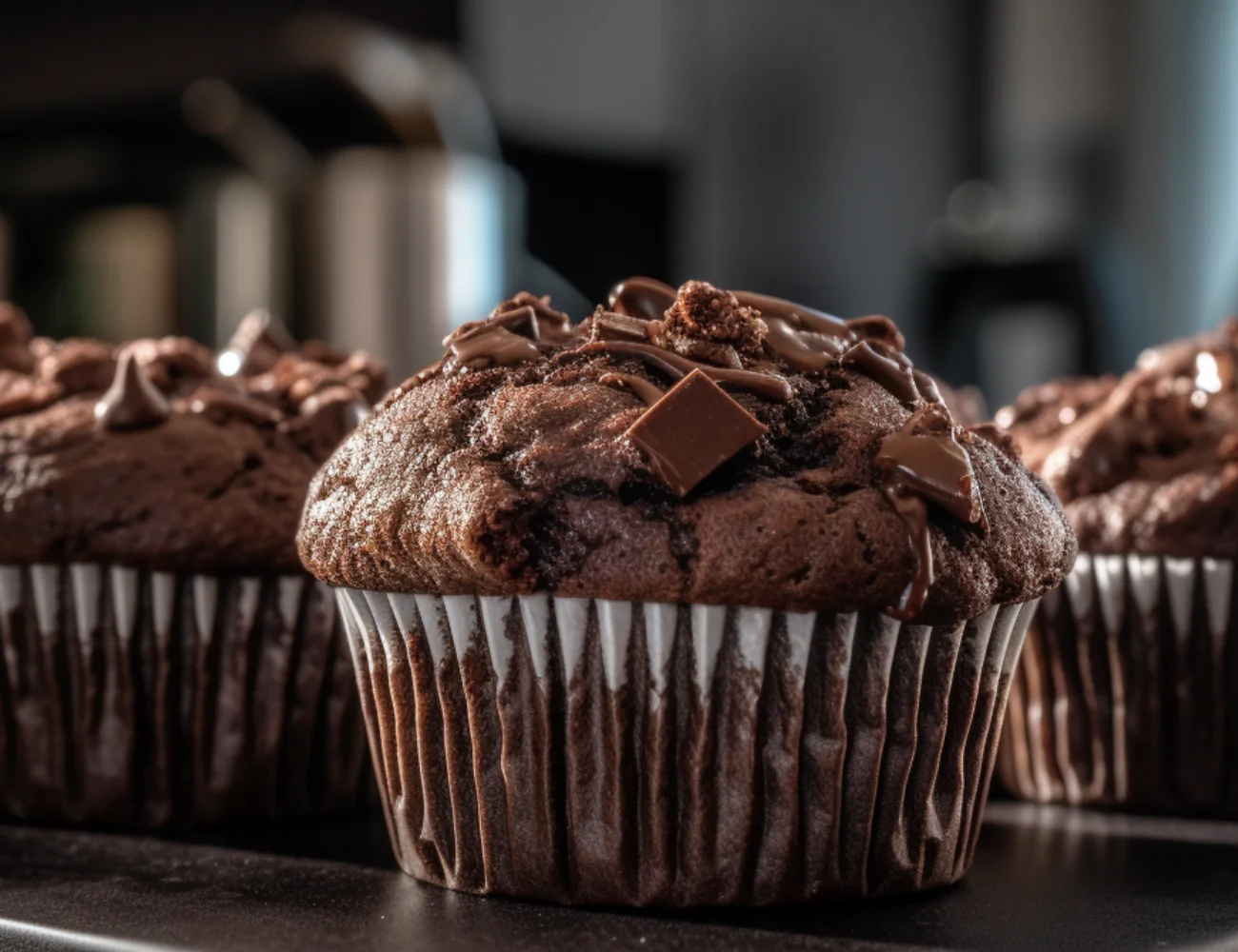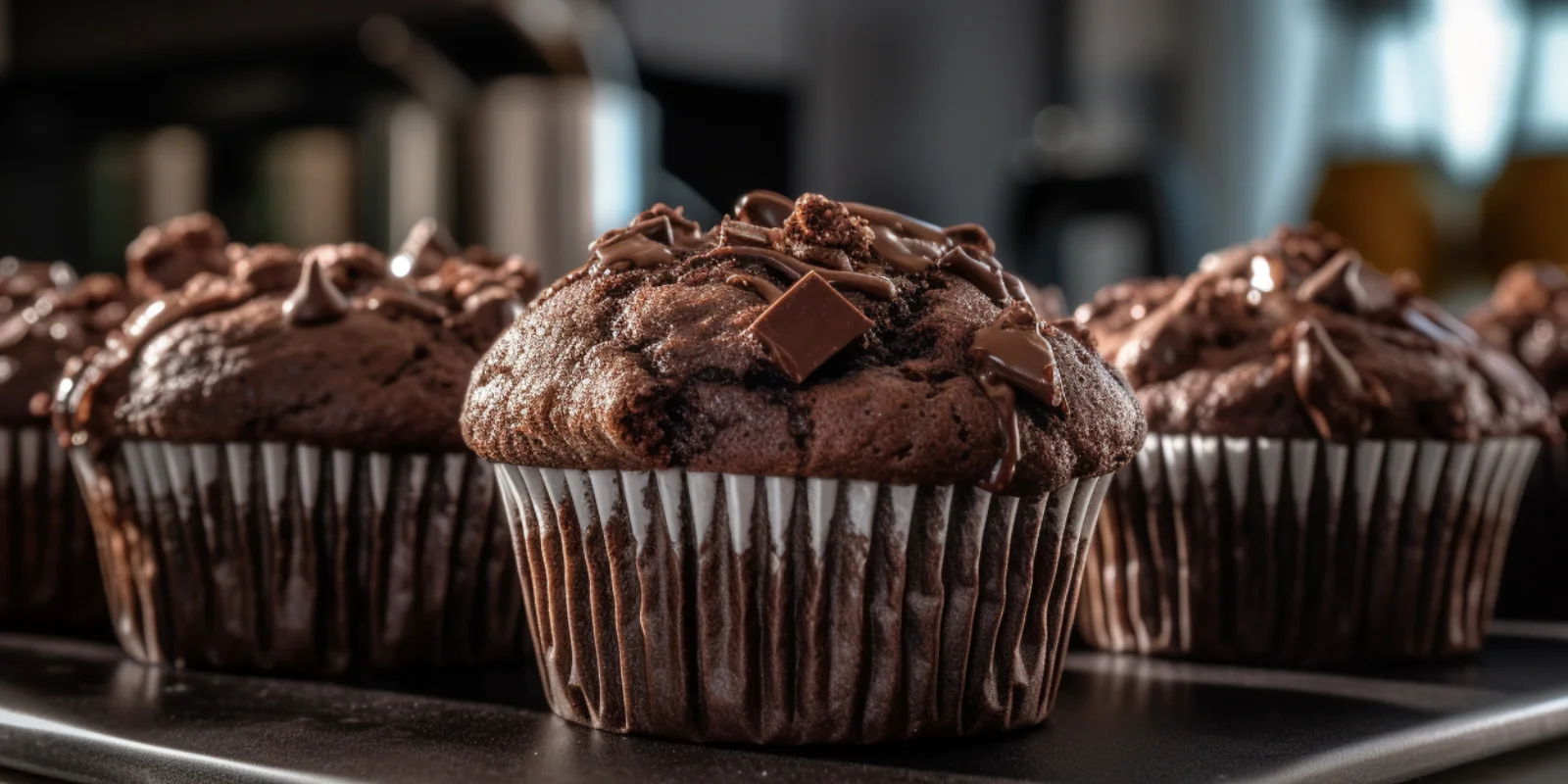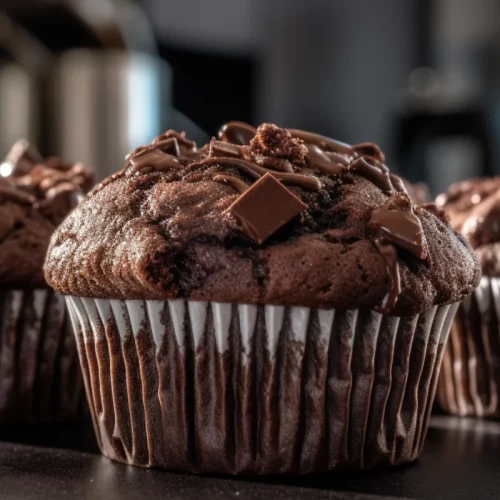You’ve heard of moist Chocolate Muffins with sour cream and baking soda, but why the sour cream? Why does the combination of sour cream (or buttermilk) and baking soda work? Can you substitute baking powder for the same result?
In this article, we’ll show you how to make our deliciously Moist Chocolate Muffins recipe and answer frequently asked questions about this common cake and muffin baking technique.

Watch the Video Recipe!
We don’t have a video recipe for our Moist Chocolate Muffins recipe yet! In the meantime, check out our Italian Hot Chocolate recipe!
Subscribe to our YouTube Channel
More video recipes? Subscribe to our YouTube Channel (it’s FREE) and click the bell to get notifications when we release a new video recipe!
Sour Cream + Baking Soda = Moist and Fluffy!
One technique used to make muffins light and fluffy is the combination of sour cream or buttermilk with baking soda. This combination creates a chemical reaction that produces carbon dioxide gas, which causes the muffins to rise. It’s the same principle used to simulate volcanos in kids’ science experiments—when you combine baking soda with vinegar or a similar acid, the mix will foam and rise!
Baking soda and baking powder are both leavening agents used in baking, but they differ in their chemical composition and how they react with other ingredients.
Why Use Baking Soda to Make Moist Muffins?
Sodium bicarbonate, also called baking soda, is a base that reacts with acidic ingredients like buttermilk or vinegar to produce carbon dioxide gas, which causes baked goods to rise. Baking soda is typically used in recipes that also contain acidic ingredients, and it requires an acidic ingredient to activate it.
Baking powder, on the other hand, is a mixture of baking soda, an acid (usually cream of tartar), and a starch. The acid in the baking powder reacts with the baking soda when it’s combined with a liquid, such as milk or water, to produce carbon dioxide gas. Baking powder is typically used in recipes that don’t contain acidic ingredients, as it already contains an acid component.
“Can I substitute baking powder for baking soda and get the same result?”
Nope! This technique is different from using baking powder, which already contains the acidic ingredient needed to create the reaction. Baking powder will not produce the same effect because it is activated by moisture, not acidity.
In our experience, when following a solid recipe, using the baking soda with an acidic ingredient (sour cream, buttermilk, yogurt) produces a moister muffin that is lighter and fluffier in texture.
“I used baking soda in other recipes… and my baked goods tasted strange (soapy). Why?”
The combination of baking soda and an acid is truly a chemical reaction! The acid will neutralize the ‘soapy’ taste of the basic baking soda, but only if your recipe has called for the right proportion of baking soda to acid. If you add more baking soda to your muffins than the amount of ‘acid’ you’ve added can neutralize, a ‘soapy’ taste will remain because not all of the baking soda has been neutralized. Here’s the rule of thumb:
- 1 cup of acidic ingredient (yogurt, sour cream, buttermilk) will only neutralize 1/2 tsp of baking soda.
However, for every 1 cup of flour you need 1/4 tsp baking soda (or 1 teaspoon of baking powder) to get a good rise. So, if you have a recipe that calls for 2 cups of flour,
This is why many muffin recipes have a bad aftertaste from the baking soda. If the recipe calls for more baking soda than can be neutralized, sensitive tastebuds will taste the baking soda.
This is why some recipes for Moist Chocolate Muffins with Sour Cream (like ours) call for both baking soda and baking powder in the recipe. We are only adding the amount of baking soda that can be effectively neutralized by the amount acidic sour cream we need to add. For the rest of the rise, we add some additional baking powder.
“Why do some recipes (like this one) call for baking soda and baking powder?”
To avoid a ‘soapy’ taste from the baking soda, you should only add the amount of baking soda that can be neutralized by the amount of sour cream (acidic ingredient) that you are adding. If you need more rise for the amount of flour you are adding, add baking powder as well—not more baking soda!
As an Amazon Associate, we earn from qualifying purchases. This means at no extra cost to you, PIATTO may earn a small commission if you click the links and make a qualifying purchase.
Moist Chocolate Muffins with Sour Cream
Equipment
- muffin liners optional (not needed for silicone muffin pans)
- muffin pan for medium size muffins (pan of 12)
Ingredients
- 2 cups flour all purpose or cake
- 1 cup granulated sugar
- ½ cup cocoa powder dutch processed
- ½ tsp baking soda
- 1 ½ tsp baking powder
- ¼ tsp salt
- 1 ¾ cup chocolate chips or dark chocolate bar chopped into chunks
- 2 large eggs room temperature
- 1 cup sour cream room temperature
- ½ cup vegetable oil
- ¼ cup whole milk room temperature
- 1 ½ tsp pure vanilla extract
Instructions
- Preheat the oven to 425°F (220°C).
- Add muffin liners to the muffin pan. Or, rub or spray oil in side to prevent muffins sticking after they are baked.
Make the Chocolate Muffin Batter
- Combine all of the dry ingredients in a large bowl: flour, sugar, cocoa powder, baking soda, baking powder, salt, and chocolate chips.2 cups flour, 1 cup granulated sugar, ½ cup cocoa powder, ½ tsp baking soda, 1 ½ tsp baking powder, 1 ¾ cup chocolate chips, ¼ tsp salt
- Combine all of the wet ingredients in a bowl: beaten eggs, sour cream, oil, milk and vanilla extract.2 large eggs, 1 cup sour cream, ½ cup vegetable oil, ¼ cup whole milk, 1 ½ tsp pure vanilla extract
- Add the wet ingredients to the dry ingredients all at once. Mix together until there are no dry clumps. Don't overmix the muffin batter!
- Fill each muffin mould to the top with muffin batter.
Bake the Muffins
- Bake the muffins in a preheated oven at 425°F (220°C) for 5 minutes.
- With the muffins still in the oven, reduce the oven temperature to 350°F (180°·C).
- Bake for 15-16 minutes longer—or until an inserted toothpick comes out clean!
- Let the baked muffins cool for about 10 minutes before removing them from the moulds. Buon appetito!
Notes
🇬🇧 This is the English-language version of our original Italian recipe on PIATTO Ricette.

